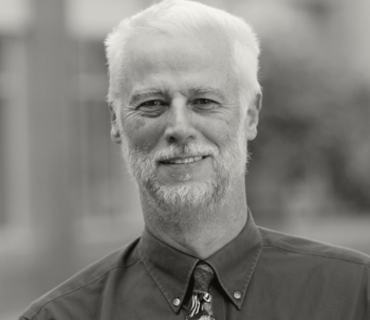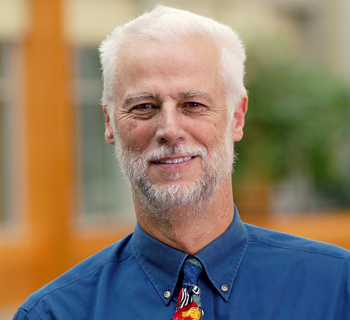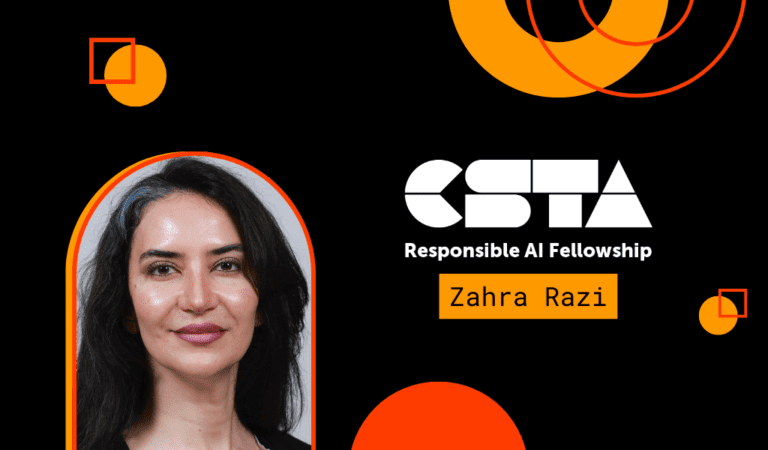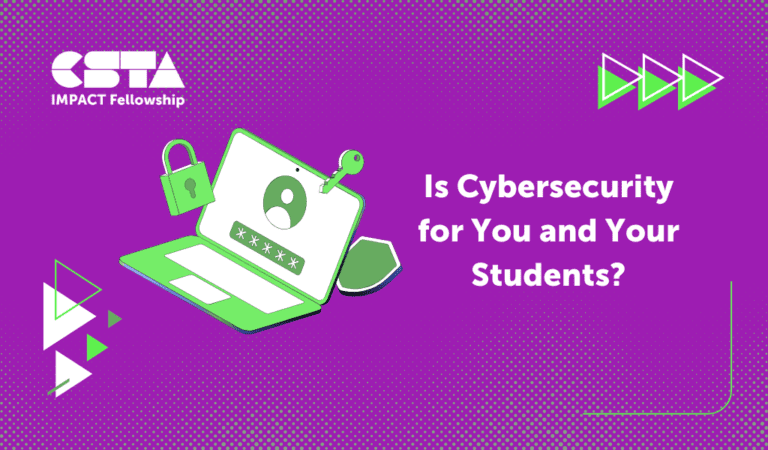
We recently interviewed Richard Ladner (he/him), professor emeritus in the Paul G. Allen School of Computer Science and Engineering at the University of Washington in Seattle, WA, and an active CSTA+ member.
Full Story
We recently interviewed Richard Ladner, a University Representative on CSTA’s Board of Directors.
 What is your name, preferred pronouns, title, and place of employment?
What is your name, preferred pronouns, title, and place of employment?
My name is Richard E. Ladner (he, him, his). I am a professor emeritus in the Paul G. Allen School of Computer Science and Engineering at the University of Washington in Seattle, WA.
What’s your favorite CS experience (e.g. teaching, research, other experience related to CS)?
I’ve been doing work in computing since the late 1960s. At the time, there were very few computers to actually work with, so most of my work was on the mathematical side of computing. When I joined the University of Washington, I studied computational complexity, which explores the time and storage that are needed to solve specific problems like factoring numbers or multiplying numbers. The algorithms for these problems that we learned in school are not the fastest known. I’m still doing research that is much more practical and less theoretical. I have taught at the college level for a very long time, but some of my most fun teaching was for middle and high school students, both in school and out of school. One experience I remember well was teaching programming in Logo to a class of middle school deaf students in Seattle in the mid-1970s. The students had never programmed before, and it was interesting to see their progression as they learned to program and, at the same time, learned a little geometry.
How long have you been involved in the CSTA?
I gave a presentation titled “Computing for Everyone” at the 2010 CSTA Conference that was held at Google in Mountain View, California. Chris Stephenson, the early CSTA Executive Director who I knew for several years before that, invited me to give a talk at the conference. Since then, I have been involved with CSTA by giving presentations at conferences and interacting with staff and volunteers, mostly about how to best include students with disabilities in the CS classes. I finally decided to try to go inside CSTA as a Board member to help facilitate the goal of full inclusion of students with disabilities.
What motivates you to be involved with CSTA?
CSTA is the leading organization representing K-12 computer science education, especially from the teacher’s perspective. As I mentioned earlier, I have been involved, mostly in a volunteer role, in bringing computer science to K-12 students with disabilities. There are many barriers to the inclusion of these students in CS education, so working with CSTA is a natural avenue to breaking down those barriers.
What have you learned that’s most interesting to you either about the CSTA or K-12 CS Education?
One of the things that I learned about K-12 CS Education is how passionate the teachers I have met are about teaching CS and broadening participation. Several years ago, I was asked to speak at a meeting of 100 AP Computer Science Principles teachers on the Facebook campus in Menlo Park, CA. That is where I first met my fellow Board member Art Lopez. So many of the teachers were not trained in computer science but taught themselves and got professional development training that gave them the tools to teach AP CSP. There was so much enthusiasm in the room that it inspired me even more in my commitment.
What do you hope for CS education in the future? How do you believe CSTA will help in achieving this?
My biggest hope for the future is that the computer science field will have demographics in similar proportions to the overall population. This has to start in K-12 CS education. It can’t wait until students arrive at college. It is not just an equity issue; it is a quality issue. The CS field will be more innovative with a diverse workforce. About 17% of K-12 students in the US population have a disability, and the vast majority have the intellectual capacity to succeed in K-12 computer science courses. The various CS curricula should be fully accessible to these students, and teachers should be prepared to include them in their classes.
What else would you like to add that might be interesting to readers about you, your commitment to CSTA, or perhaps why others should also be interested in becoming involved?
Both my parents were high school teachers at the California School for the Deaf when the campus was in Berkeley, CA, where I grew up. They were deaf themselves and were fluent in written English and American Sign Language. My commitment to inclusive and accessible education is rooted in my experience growing up in the Deaf Community.




